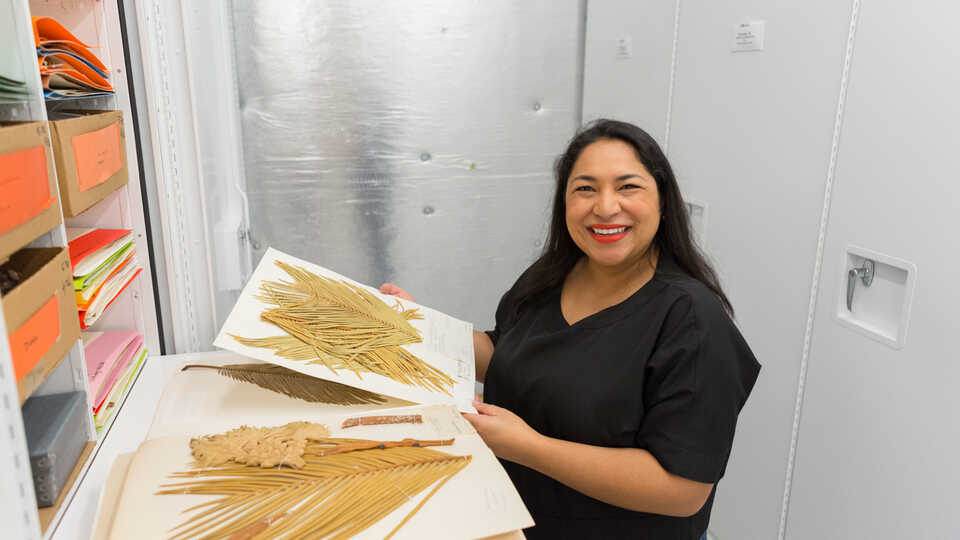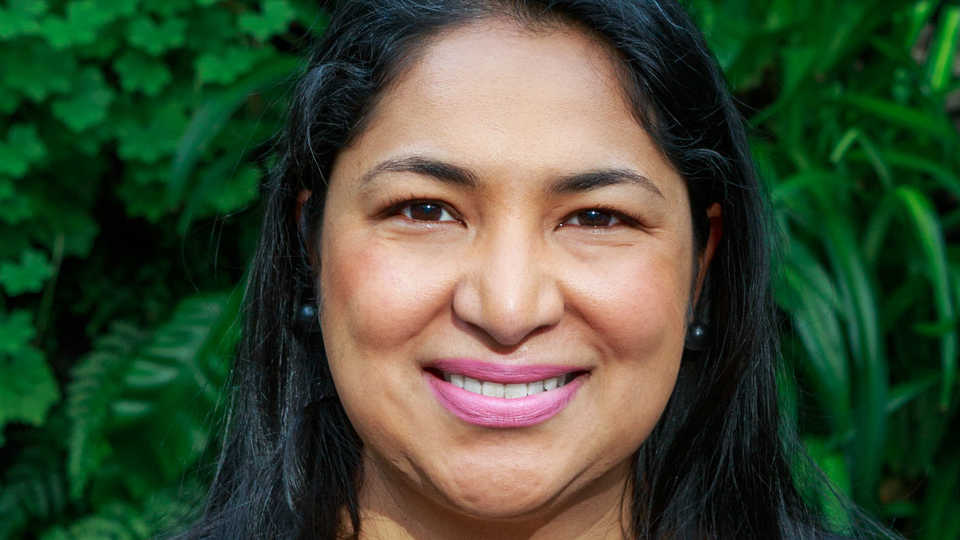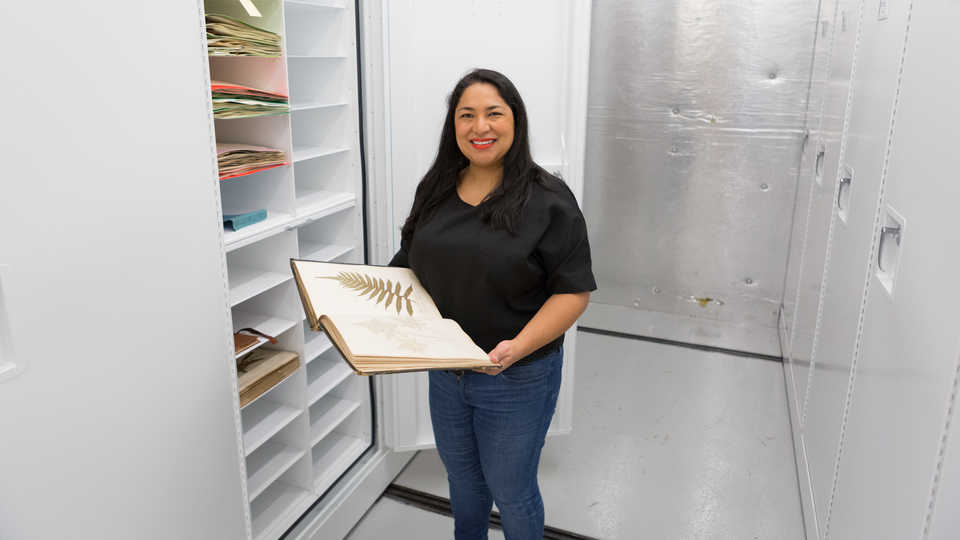Dr. Nathalie Nagalingum, cycad expert, joins the Academy’s Institute for Biodiversity Science and Sustainability
SAN FRANCISCO (March 29, 2017) – The California Academy of Sciences is pleased to announce the appointment of Nathalie Nagalingum, PhD, as its newest Associate Curator and McAllister Chair of Botany. In her new role, Nagalingum will study the evolution and diversification of plants, particularly ferns and cycads, and also oversee the Academy’s botany collection. Nagalingum is one of just a handful of researchers worldwide who studies cycads, a palm-like plant that comprises the most endangered group of organisms on Earth. In addition to her research, Nagalingum is passionate about museum science and the opportunity to use her research findings to inform broader conservation projects.
“I see my role at the Academy as an exciting opportunity to share my love for plants with the Bay Area and beyond,” says Nagalingum. “I love to remind others of the importance of plants in our everyday lives and how we can work to preserve our botanic heritage. I can’t imagine a better place than the Academy to combine my passions for science, outreach, and conservation.”
As a world-traveling botanist, Nagalingum will help bring exciting new research to the Academy’s oldest collection and join the ranks of veteran botany curators from the department’s nearly 160-year history. Nagalingum also joins a strong tradition of female botanists at the Academy. She carries on the legacy of the famed Alice Eastwood, an early 1900s botany curator who helped pioneer women in science, as well as Dr. “Canopy Meg” Lowman, the Academy’s Director of Global Initiatives and Lindsay Chair of Botany.
“We’re very excited that Nathalie has joined the Academy, bringing her state-of-the-art skills in genomics and analytical tools to address big questions about the evolution of plants, including some that are critically threatened or endangered,” says Shannon Bennett, PhD, Chief of Science and Sustainability at the Academy. “Her work on the evolution of cycads, for example, will guide how the species can be conserved and sustained in the face of increased poaching and habitat loss. Nathalie is not only a leader in her field but shares her enthusiasm compellingly to inspire us to join in a collective mission to explore, explain, and sustain all life on Earth.”
Nagalingum has fostered her passion for plants since childhood despite a rather urban upbringing in Melbourne, Australia. As a teenager, she cultivated her own vegetable garden because she wanted to be more sustainable. While at the University of Melbourne, Nagalingum naturally gravitated toward degrees in science, eventually earning a PhD in paleobotany.
“I found that I love thinking about how impermanent the world is,” says Nagalingum. “What did the landscape look like before flowers or big oaks existed? When you frame history in terms of vast geologic time, you realize that modern landscapes as we know them can still change so dramatically.”
A modern group with ancient lineages
Nagalingum studies the evolutionary relationships of ferns, but recently she’s focused the majority of her research on another plant group called the Cycadales, or cycads, which are the oldest seed plants on Earth. These pine relatives have cone-bearing trunks topped by a lush crown of fronds and are often confused for palm trees. They range in size, some growing at ground level while others reach more than 25 feet tall.
“Cycads are most notably recognized as the exotic, palm-like plants that often accompany dinosaurs in popular renderings of the Jurassic,” says Nagalingum. “This led to the view that cycads are ‘living fossils’ or relics from the time of the dinosaurs.”
While cycads date back almost 300 million years to the Permian Period, Nagalingum’s research reveals that the 300 species left on Earth today arose only 12 million years ago—recent in evolutionary terms and many millions of years after the dinosaurs became extinct. Her discovery upended long-held, popular assumptions about the living species.
“I hope that my research can help reshape how we see cycad species,” she says. “If we see them as living relics that have survived climate variability since the dinosaurs roamed, then we risk considering them as more resilient than they actually are. But now that we understand today’s cycads are recent species that probably arose from the last major cooling period, their vulnerability to modern climate change is even more apparent.”
The most endangered organism on Earth
“Animals don’t live in isolation,” says Nagalingum, emphasizing that cycads, like all plants, are often overlooked when considering life on Earth. Yet most are surprised to hear that cycads surpass the Animal Kingdom as the most endangered group of species on the planet. Despite the cycad’s relative obscurity, Nagalingum is determined to spotlight their evergreen presence.
“Many people don’t realize that a common yard plant known as a sago palm belongs to the cycad group,” says Nagalingum, adding that she’s spotted them across the Bay Area from Japantown to her local Whole Foods. “While the sago palm is widespread and common, about two-thirds of all cycad species face a serious threat of extinction,” which is nearly double the rate of endangered corals.
Cycads face particularly dire straights due in part to their biology. Many cultures revere cycads for their longevity, but their painfully slow growth makes them especially vulnerable in the wild. It can take a full year for the seeds to germinate. The seeds are too heavy for the wind to boost their brief free-fall to the ground, so their geographic dispersal remains quite limited. It takes another year for the first tiny leaf to begin unfurling.
Having once thrived all across the globe, cycads can still be found in tropical and subtropical habitats ranging from sandy beaches and lush rainforests to vast, grassy savannahs. Despite this diverse range, the widespread conversion of forests into grazing land for cattle and agriculture has degraded what suitable habitat remains for these exotically beautiful plants.
“It’s alarming how frequently cycads are poached in the wild and even stolen from botanic gardens. Their rarity and ornamental appearance fetch a high price when sold to private collectors,” says Nagalingum, urging the importance of purchasing cycads from reputable growers.
Several cycad species are already extinct in the wild. For the cycad Encephalartos woodii, only a few male specimens remain in botanic gardens. Without their female counterparts, future reproduction is impossible. In South Africa, a genetic hotspot for cycads, conservation officials have gone so far as to implant microchips in the cycad’s thick trunks to trace stolen specimens.
“Documenting cycads is becoming increasingly important,” Nagalingum explains, “so we can prioritize which species—and where—need the most urgent protection.”
Guiding conservation in the Bay Area and beyond
Recent advances in genetics have allowed Nagalingum to conduct a more robust analysis than ever before of ambiguous relationships among cycad species. She looks forward to working with the Academy’s Center for Comparative Genomics to map cycad evolution and species diversity—“as well as that of ferns,” she adds, careful not to neglect her other loves in the plant world.
Prior to the Academy, Nagalingum worked at the Royal Botanic Garden in Sydney and conducted extensive fieldwork across Australia. Her efforts are revealing new genetic diversity among cycads, which will help guide conservation across the continent.
As part of her commitment to directly apply scientific research to conservation, Nagalingum will continue to identify genetic hotspots of cycads in the wild and use these findings to test whether botanic gardens are preserving wild species diversity.
“I look forward to working with herbaria and botanic gardens here in the Bay Area and beyond to ensure that these important institutions are focusing conservation priorities on the cycad species most threatened in the wild,” says Nagalingum, with hopes to expand future fieldwork across the broader Pacific region and into Asia.
Nagalingum is no newcomer to the Bay Area. As a former postdoctoral researcher at UC Berkeley, she also has two East Coast stints at Duke and Harvard University under her belt. “I am certainly won over by the West Coast,” she assures, explaining that she loves exploring all that the Bay Area has to offer—especially its cultural diversity. She lives in San Francisco not too far from the botanic treasure trove of Golden Gate Park.
The Institute for Biodiversity Science and Sustainability at the California Academy of Sciences is at the forefront of efforts to understand two of the most important topics of our time: the nature and sustainability of life on Earth. Based in San Francisco, the Institute is home to more than 100 world-class scientists, state-of-the-art facilities, and nearly 46 million scientific specimens from around the world. The Institute also leverages the expertise and efforts of more than 100 international Associates and 400 distinguished Fellows. Through expeditions around the globe, investigations in the lab, and analysis of vast biological datasets, the Institute’s scientists work to understand the evolution and interconnectedness of organisms and ecosystems, the threats they face around the world, and the most effective strategies for sustaining them into the future. Through innovative partnerships and public engagement initiatives, they also guide critical sustainability and conservation decisions worldwide, inspire and mentor the next generation of scientists, and foster responsible stewardship of our planet.
Press Contacts
If you are a journalist and would like to receive Academy press releases please contact press@calacademy.org.
Digital Assets
Hi-res and low-res image downloads are available for editorial use. Contact us at press@calacademy.org to request access.


